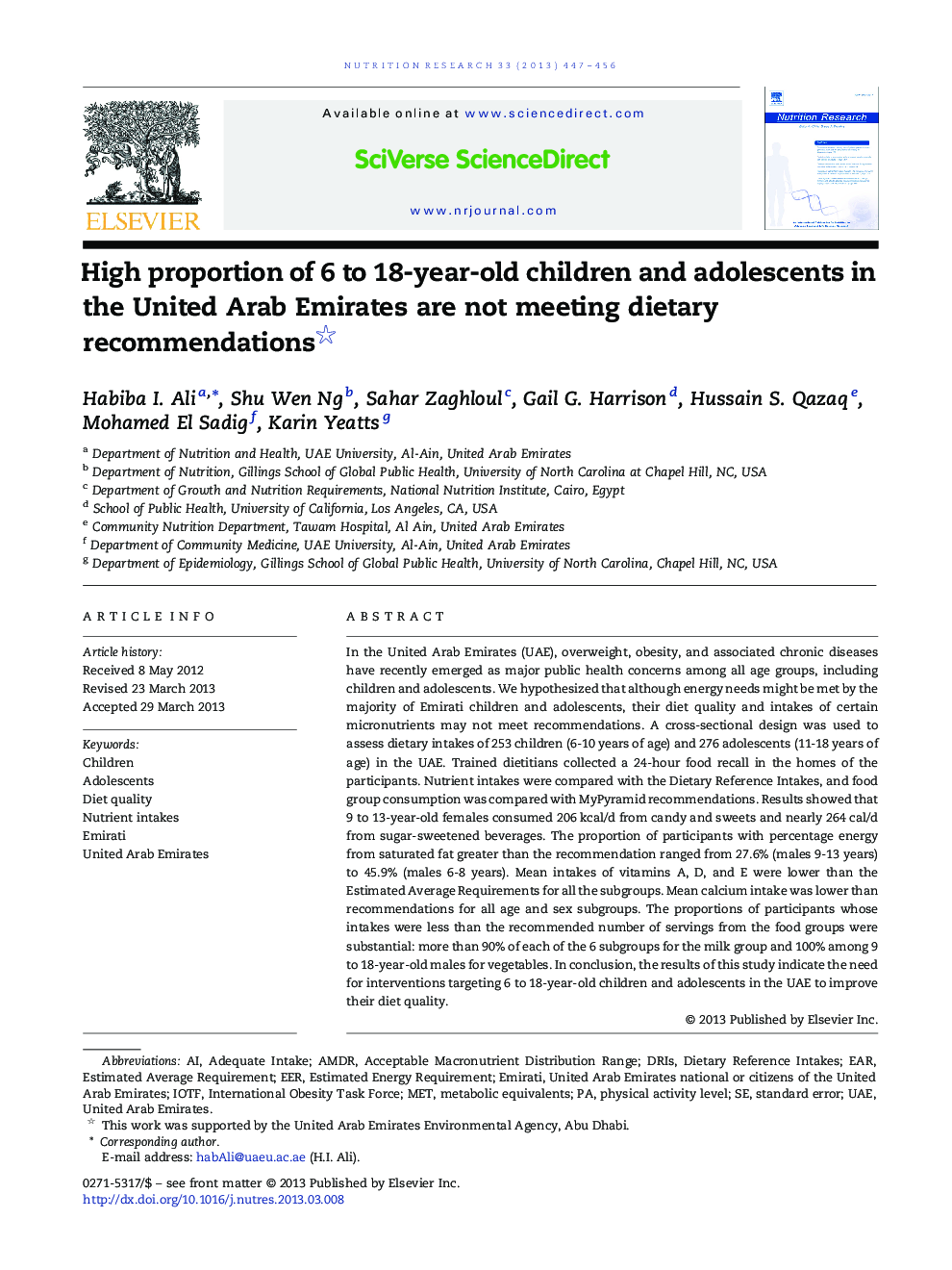| Article ID | Journal | Published Year | Pages | File Type |
|---|---|---|---|---|
| 5904409 | Nutrition Research | 2013 | 10 Pages |
Abstract
In the United Arab Emirates (UAE), overweight, obesity, and associated chronic diseases have recently emerged as major public health concerns among all age groups, including children and adolescents. We hypothesized that although energy needs might be met by the majority of Emirati children and adolescents, their diet quality and intakes of certain micronutrients may not meet recommendations. A cross-sectional design was used to assess dietary intakes of 253 children (6-10 years of age) and 276 adolescents (11-18 years of age) in the UAE. Trained dietitians collected a 24-hour food recall in the homes of the participants. Nutrient intakes were compared with the Dietary Reference Intakes, and food group consumption was compared with MyPyramid recommendations. Results showed that 9 to 13-year-old females consumed 206 kcal/d from candy and sweets and nearly 264 cal/d from sugar-sweetened beverages. The proportion of participants with percentage energy from saturated fat greater than the recommendation ranged from 27.6% (males 9-13 years) to 45.9% (males 6-8 years). Mean intakes of vitamins A, D, and E were lower than the Estimated Average Requirements for all the subgroups. Mean calcium intake was lower than recommendations for all age and sex subgroups. The proportions of participants whose intakes were less than the recommended number of servings from the food groups were substantial: more than 90% of each of the 6 subgroups for the milk group and 100% among 9 to 18-year-old males for vegetables. In conclusion, the results of this study indicate the need for interventions targeting 6 to 18-year-old children and adolescents in the UAE to improve their diet quality.
Keywords
Related Topics
Life Sciences
Biochemistry, Genetics and Molecular Biology
Endocrinology
Authors
Habiba I. Ali, Shu Wen Ng, Sahar Zaghloul, Gail G. Harrison, Hussain S. Qazaq, Mohamed El Sadig, Karin Yeatts,
